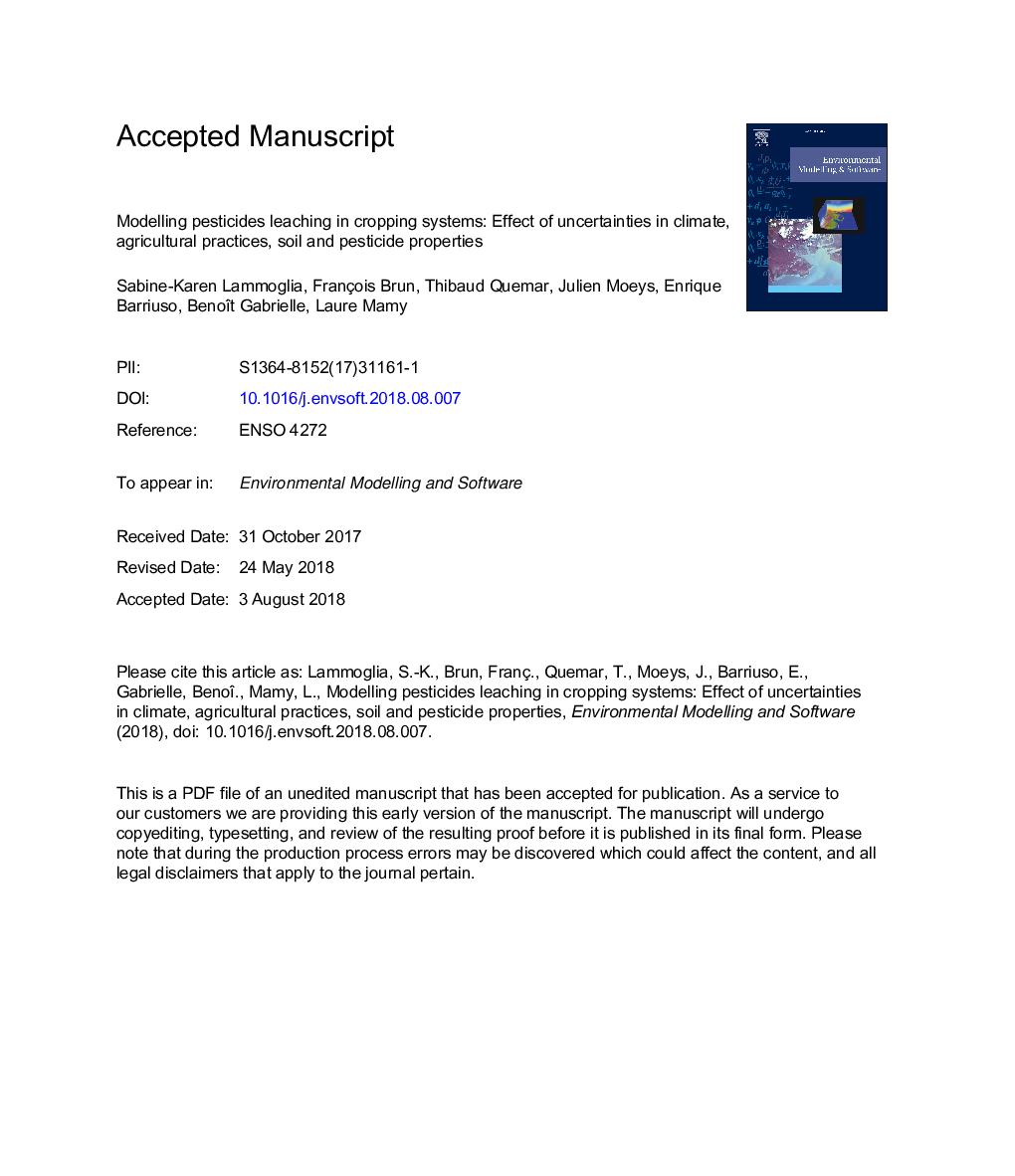| Article ID | Journal | Published Year | Pages | File Type |
|---|---|---|---|---|
| 10133072 | Environmental Modelling & Software | 2018 | 32 Pages |
Abstract
Modelling of pesticide leaching is paramount to managing the environmental risks associated with the chemical protection of crops, but it involves large uncertainties in relation to climate, agricultural practices, soil and pesticide properties. We used Latin Hypercube Sampling to estimate the contribution of these input factors with the STICS-MACRO model in the context of a 400â¯km2 catchment in France, and two herbicides applied to maize: bentazone and S-metolachlor. For both herbicides, the most influential input factors on modelling of pesticide leaching were the inter-annual variability of climate, the pesticide adsorption coefficient and the soil boundary hydraulic conductivity, followed by the pesticide degradation half-life and the rainfall spatial variability. This work helps to identify the factors requiring greater accuracy to ensure better pesticide risk assessment and to improve environmental management and decision-making processes by quantifying the probability and reliability of prediction of pesticide concentrations in groundwater with STICS-MACRO.
Related Topics
Physical Sciences and Engineering
Computer Science
Software
Authors
Sabine-Karen Lammoglia, François Brun, Thibaud Quemar, Julien Moeys, Enrique Barriuso, Benoît Gabrielle, Laure Mamy,
